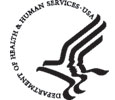Hispanic/Latino Heritage Month
 Learn about the diverse demographics, see examples of health disparities, and link to more information on the health and well-being of Hispanic/Latino Populations in the United States.
Learn about the diverse demographics, see examples of health disparities, and link to more information on the health and well-being of Hispanic/Latino Populations in the United States.
September 15th – October 15th, 2012
 In September 1968, Congress authorized President Lyndon B. Johnson to proclaim National Hispanic Heritage Week. The observance was expanded in 1988 to a month long celebration (Sept. 15 – Oct. 15). We celebrate the culture and traditions of U.S. residents who trace their roots to Spain, Mexico, and the Spanish-speaking nations of Central America, South America and the Caribbean.
In September 1968, Congress authorized President Lyndon B. Johnson to proclaim National Hispanic Heritage Week. The observance was expanded in 1988 to a month long celebration (Sept. 15 – Oct. 15). We celebrate the culture and traditions of U.S. residents who trace their roots to Spain, Mexico, and the Spanish-speaking nations of Central America, South America and the Caribbean.
September 15th was chosen as the starting point for the celebration because it is the anniversary of independence of five Latin American countries: Costa Rica, El Salvador, Guatemala, Honduras and Nicaragua. In addition, Mexico and Chile celebrate their independence days on September 16th and 18th, respectively.
Definition
Hispanic or Latino is defined as "a person of Cuban, Mexican, Puerto Rican, South or Central American, or other Spanish culture or origin, regardless of race."
In data collection and presentation, federal agencies are required to use a minimum of two ethnicities: "Hispanic or Latino" and "Not Hispanic or Latino".
For more information see 2010 Census Brief [PDF - 1.68MB].
 Demographics
Demographics
According to U.S. Census Bureau population estimates as of July 1, 2011, there are roughly 52.0 million Hispanics living in the United States, representing approximately 16.7% of the U.S. total population, making people of Hispanic origin the nation's largest ethnic or race minority.
The projected U.S. Hispanic population for July 1, 2050 is estimated to reach 132.8 million, constituting approximately 30% of the U.S. population by that date.
Among Hispanic subgroups, in 2010, Mexicans ranked as the largest at 63%. Following Mexicans were Puerto Ricans (9.2%), Cubans (3.5%), Salvadorans (3.3%), Dominicans (2.8%), and the remaining 18.2% were people of Central and South America or other Hispanic or Latino origins.
In 2010, 23.2% of elementary and high school students were Hispanic, but only 6.2% of college students were Hispanic.
As of July 1, 2011, the state with the largest Hispanic population was California (14.4 million), and the state with the highest percentage of Hispanic population was New Mexico (46.7%).
The percentage of Hispanics who lacked health insurance in 2010 was 30.7%.
Examples of Important Health Disparities Experienced by Hispanics/Latinos
 CDC Health Disparities & Inequalities Report
CDC Health Disparities & Inequalities Report
The CDC Health Disparities & Inequalities Report - United States, 2011 (CHDIR), provides analysis and reporting of the recent trends and ongoing variations in health disparities and inequalities in selected social and health indicators, both of which are important steps in encouraging actions and facilitating accountability to reduce modifiable disparities by using interventions that are effective and scalable.
Examples of some of the important health disparities noted in the CHDIR:
- The racial/ethnic disparity in both income and education, compared with non-Hispanic whites was greatest for Hispanics and non-Hispanic American Indians/Alaska Natives.
- Next to Non-Hispanic blacks, Hispanics and American Indians/Alaska Natives had the highest percentages of householders living in inadequate, unhealthy housing.
 Hispanics were more likely to reside in counties that did not meet the standard for ozone in comparison with non-Hispanic whites.
Hispanics were more likely to reside in counties that did not meet the standard for ozone in comparison with non-Hispanic whites.- Hispanics had substantially higher uninsured rates, compared with Asian/Pacific Islanders and non-Hispanic whites.
- Lower influenza vaccination coverage was observed for Hispanics, compared with non-Hispanic whites, among all persons aged > 6 months during the 2009-10 influenza season.
- Among males aged < 20 years, the prevalence of obesity was highest among Mexican-Americans, as compared to non-Hispanic whites and non-Hispanic blacks.
- During 2004-2007, the rate of preventable hospitalizations was higher among Hispanics, compared with non-Hispanic whites.
- Hispanics continued to experience a disproportionate burden of HIV diagnoses.
- In 2008, the birth rate for Hispanic adolescents was approximately 5 times the rate for Asian/Pacific Islander adolescents, 3 times the rate for non-Hispanic white adolescents, and somewhat higher than the rates for non-Hispanic black and American Indian/Alaska Native adolescents.
For More Information, See the CHDIR Website.
More Information
OMHHE
CDC
- CDC Feature: Hispanic/Latino Heritage
- CDC Feature: National Latino AIDS Awareness Day ~ October 15th
- Health Disparities in HIV/AIDS, Viral Hepatitis, STDs, & TB: Hispanics/Latinos
- HIV Among Latinos
- Health, United States, 2011 - Hispanic or Latino Population
- FastStats - Health of Hispanic or Latino Population
- Healthy People 2010 - Snapshot for the Hispanic Population [PDF - 197KB]
- Sociodemographic Maps - Hispanics
- Health Disparities Experienced by Hispanics---US. MMWR 2004
- Chagas Disease
US Department of Health & Human Services (HHS)
 Office of Minority Health (OMH)
Office of Minority Health (OMH)
- National Hispanic Heritage Month - Sept. 15 - Oct. 15
- Hispanic/Latino Profile
- Minority Women's Health - Latinas
Other Federal Government
- White House Presidential Proclamations
- White House Executive Order 13555 Initiative on Educational Excellence for Hispanics [PDF - 210KB]
- US Census Bureau, Facts for Features: Hispanic Heritage Month 2012
- US Census Bureau, The Hispanic Population: 2010 [PDF - 1.52MB]
- MedlinePlus: Hispanic-American Health
- National Latino AIDS Awareness Day ~ October 15
Other Resources
Get email updates
To receive email updates about this page, enter your email address:
Contact Us:
- Centers for Disease Control and Prevention
1600 Clifton Rd
Atlanta, GA 30333 - 800-CDC-INFO
(800-232-4636)
TTY: (888) 232-6348 - cdcinfo@cdc.gov





